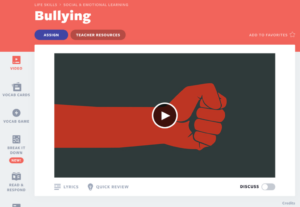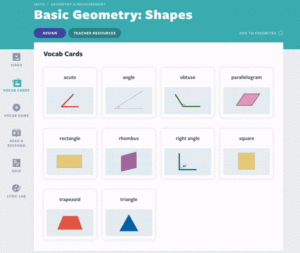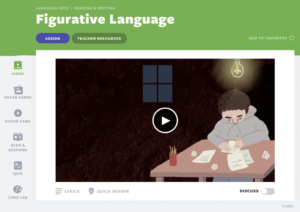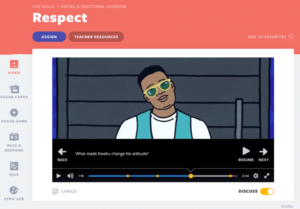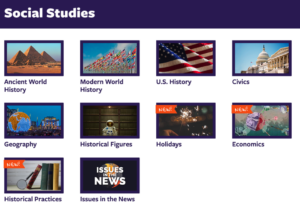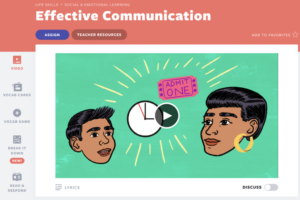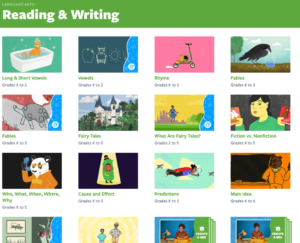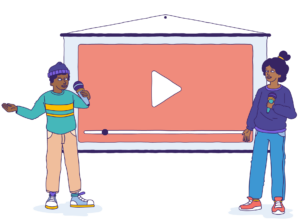I am a firm believer that children are most successful when they have smiles on their faces and are given the opportunity to have a voice. In order for meaningful learning to occur, engagement must exist first. Anyone can stand at the front of a classroom and deliver content; many educators may be able to produce academic results by doing just that. However, in order to have a lasting impact, I feel that it is absolutely necessary to focus on relationships and provide opportunities to engage in exciting, culturally-relevant learning activities.
Forming intentional relationships also helps to create a positive culture within the classroom. Within our classroom, there are undoubtedly high expectations – expectations that may be intimidating without the bond we share. The relationships that exist within our classroom and the support that my scholars provide to one another creates a safety net in which my students feel more comfortable taking risks and participating in highly interactive lessons.
When using Flocabulary, my scholars have no shame singing aloud, dancing in front of their peers, sharing their thinking or creating raps with their classmates.
I feel that part of teaching students to love learning is to ensure that school truly is an exciting place to be. Therefore, I do all that I can to make our classroom a place where students want to be rather than have to be. If you were to walk into our classroom, it is likely you will walk into a wild room transformation designed to increase engagement and give students one more reason to be excited to come to school. During these transformations, I choose a theme that mirrors student interests and create engaging lesson plans and activities that match this theme.
The rigor of the Flocabulary activities allows me to teach the content and standards required in a nontraditional way that motivates students to work to the best of their ability. Oftentimes during these transformations students work collaboratively on complex tasks that are frequently above grade level. If we aren’t excited to be here, why should our students be?
1. Use new social and emotional learning videos at the beginning of the school year to teach your scholars interpersonal skills that are essential to building a strong classroom community
I’ve used the Building Empathy lesson at the beginning of the year as it is super relevant to the types of activities we do to build a strong classroom community from day one. This year we are using the Growth Mindset, Active Listening, Bullying and Goal Setting lessons during the first week of this school year. These are all topics that are incredibly important to cover in your first couple of weeks of school, as they enhance the classroom community, learning environment and develop student ownership of their learning.

2. Use the Week in Rap as an opportunity for your scholars to learn about current events and hold debates on hot topics.
Interested in learning about the Week in Rap, Flocabulary’s weekly current events offering? This post on 6 ways to bring current events into the classroomcovers different ways to implement, tips for cultivating meaningful conversations about the news and helps overcome challenges in the classroom.
3. Teaching Science? Find a Flocabulary video to introduce your topic. Once your students have a better understanding of content-specific vocabulary, bring out the hands-on materials, and let the magic happen!
4. Need new call-backs to get the attention of your scholars? Why not use a few lines from a Flocabulary lesson?

You say: “A Summary”
They respond: “Is a short explanation. With just the important information, when you summarize, make it simple. Cut out the details and keep what’s essential!”

You say: “It takes force!”
They respond: “To make an object move. It won’t move without force it’s true. A push or pull will move it around but FRICTION will slow it down!”
“Flocabulary helps me learn new concepts a lot quicker because of the catchy lyrics. The song lyrics, vocab cards, and vocab games help me retain the words I’m learning. I love hip-hop and writing my own raps so using Lyric Lab to write my own raps about what I’ve learned is a perfect learning experience for me!”
5. Don’t wait until February to tie in lessons about important African Americans in history. Flocabulary has awesome resources available to integrate high-quality lessons throughout the year!
During a space transformation, my students engaged in nonfiction articles pulled from Newsela on Katherine Johnson & The Human Computers. These articles were integrated into tasks throughout the week while the Flocabulary video itself was the focal point. We uncovered a lot of the reasons as to why Johnson and her peers were not given the credit they deserved for a long period of time and how these injustices have remained commonplace throughout much of history. The Read and Respond activity was challenging but when printed and used as task cards in groups, students were able to use close reading skills and strategies to better comprehend the text and gain a better overall understanding of the lyrics within the video. At the end of the week, we had a movie night and watched Hidden Figures. As soon as the movie ended, the kids burst with applause and just HAD to sing the song together one last time before heading home for the night!
When teaching Indiana history, we cover The Underground Railroad and the purpose that it served during that time period. The Harriet Tubman Flocabulary lesson and activities lend themselves well to this topic and the video itself does an incredible job of providing images that help students more easily identify the free states, slave states, and the Underground Railroad routes.
6. Use Lyric Lab to write a rap with your class. Record a music video!
Choose a beat and rap away. Flocabulary offers different beats; I suggest modeling an example with the “Love You” for warm-up because it has a slower pace, and then use “Ice Cream Taster” for fluent readers.
7. Use Flocab to increase engagement in your Writing Block!
Let’s be honest…grammar isn’t always the most exciting thing to teach OR to learn. Flocabulary fixes this problem! There are loads of videos with outstanding accompanying resources that make those boring lessons far more engaging for your scholars while also helping them to truly retain the skills being taught. When planning a unit, we often look at the skills that need to be taught and then determine which Flocabulary videos will enhance our lessons.

8. Do you have a favorite book to read as a class? Check out the “Teacher Resources” available for ELA lessons and see how you can incorporate these.
For example, for the books “Wonder” and “Maniac Magee,” I used the videos, vocabulary, and lessons for:
- activities
- African
- Applause
- around
- articles
- BEST
- Books
- build
- Building
- Children
- community
- content
- conversations
- Conversion
- Couple
- Cream
- Creating
- credit
- Culture
- Current
- day
- develop
- Environment
- events
- faces
- Firm
- First
- Focus
- Free
- fun
- Games
- here
- High
- history
- hold
- Home
- How
- HTTPS
- identify
- Impact
- Increase
- Indiana
- information
- interactive
- IT
- Job
- Johnson
- kids
- LEARN
- learned
- learning
- LEND
- Level
- Long
- love
- Match
- materials
- modeling
- move
- movie
- Music
- net
- news
- offering
- Offers
- Opportunity
- order
- planning
- readers
- Reading
- reasons
- Relationships
- Resources
- Results
- Safety
- School
- Science
- Share
- Short
- Simple
- skills
- So
- Social
- Space
- standards
- States
- Student
- successful
- support
- Teaching
- theme
- Thinking
- TIE
- time
- tips
- Topics
- Transformation
- Video
- Videos
- Voice
- wait
- week
- weekly
- within
- words
- Work
- writing
- year
- youtube


